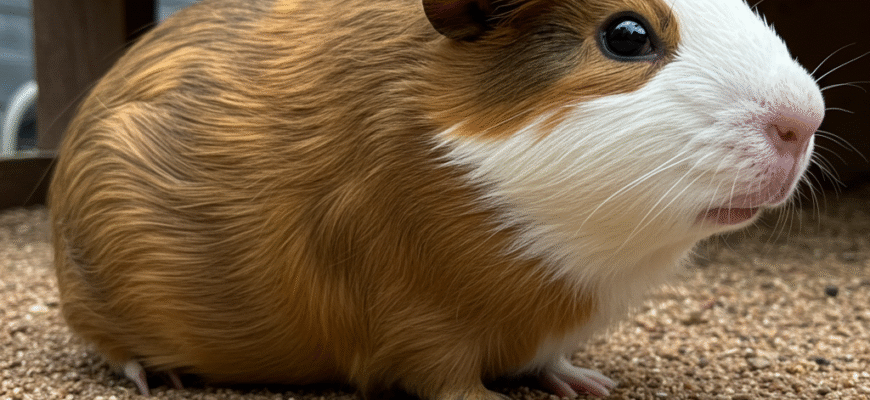Content
Understanding Your Guinea Pig’s Natural Instincts
Before diving into specific ideas, let’s think about what makes a guinea pig tick. In the wild, their ancestors spent much of their time foraging for food, hiding from predators, exploring their surroundings, and interacting with their herd. These instincts don’t disappear just because they live in a comfy cage. Enrichment aims to tap into these innate behaviors in a safe, domestic setting. Key behaviors to encourage include:- Foraging: Searching for food is a primary drive.
- Exploring: They are naturally curious about their environment.
- Hiding: As prey animals, having secure places to hide makes them feel safe.
- Chewing: Their teeth grow continuously, so chewing is vital for dental health.
- Social Interaction: Guinea pigs are social animals and thrive on companionship.
Boosting Their Home Environment
Enrichment starts with the cage itself. While minimum size guidelines exist, bigger is almost always better. More space means more room to roam, popcorn (those happy little jumps!), and explore. But space alone isn’t enough; how you set it up matters immensely.Hideouts Galore
Guinea pigs need multiple places to feel secure. Offer a variety of hideouts like plastic igloos (often called ‘pigloos’), fabric tunnels, fleece hides, wooden houses, and even simple cardboard boxes with entrance holes cut out. Having several options allows them to choose and prevents squabbles if you have multiple pigs. Scatter these around the cage so they always have a safe spot nearby.Varying the Terrain
Instead of just one type of bedding, consider offering different textures in different areas. A section with soft fleece, another with paper bedding for burrowing, and of course, plenty of hay creates a more stimulating landscape. Safe, sturdy ramps (with low inclines and side protection) can add vertical interest, but ensure they are designed specifically for guinea pigs to prevent falls or leg injuries.Safety Check for Cage Accessories: Always ensure hideouts and tunnels are large enough for your guinea pigs to easily turn around in and won’t trap them. Check wooden items for splinters and avoid anything with small, chewable parts that could be ingested. Ramps should have solid footing and not be too steep.
The Importance of Hay
Hay isn’t just food; it’s a major source of enrichment! Provide large piles of fresh hay daily. They love to burrow in it, tunnel through it, nap in it, and, of course, munch on it. Using different types of hay (like Timothy, Orchard, Botanical) can add variety in taste and texture, further enhancing their environment.Making Mealtime an Adventure: Foraging Fun
Ditch the boring food bowl routine, at least sometimes! Making your guinea pigs work a little for their food taps directly into their foraging instincts.Scatter Feeding
Instead of placing pellets in a bowl, scatter them around the cage, perhaps mixed into the hay or bedding. This encourages them to move around and search, mimicking natural foraging behavior. Do the same with small pieces of their daily vegetables.Hay-Based Surprises
Stuff small amounts of veggies or herbs deep within the hay pile or inside a cardboard tube packed loosely with hay. They’ll have fun sniffing out and digging for the tasty rewards.Simple Puzzle Feeders
You don’t need expensive toys. A paper lunch bag with some veggies inside, loosely crumpled, provides crinkly fun as they tear it open. A toilet paper tube with the ends folded in and a few pellets inside works well too. Purpose-made guinea pig treat balls or puzzle feeders can also be used, but ensure they are sturdy and safe, dispensing food slowly as the pig interacts with them.Toys and Chewables: Keeping Teeth Trim and Minds Busy
Chewing is a natural and necessary behavior for guinea pigs. Providing safe chew toys helps keep their ever-growing teeth in good shape and provides mental stimulation.Safe Wood Options
Untreated wood blocks or branches from safe trees like apple or willow are excellent choices. Ensure they haven’t been treated with pesticides. Many pet stores sell pre-packaged, safe wood chews.Cardboard Creations
Never underestimate the power of cardboard! Empty toilet paper rolls, paper towel rolls, and small cardboard boxes are free, safe, and versatile toys. Guinea pigs enjoy chewing them, pushing them around, and hiding in larger boxes. You can even build simple castles or tunnels by taping boxes together (use minimal paper tape on the outside only).Woven Grass and Hay Toys
Toys made from woven hay, seagrass, or willow, such as balls, mats, and tunnels, are fantastic because they are entirely edible and safe. They provide chewing opportunities and can be pushed around or hidden in.Paper Power
Plain paper lunch bags or even just crumpled-up balls of plain paper (no ink or gloss) can provide surprising amounts of fun. The noise and texture are stimulating for many pigs.Verified Safe Materials: Focus on items made from untreated wood (apple, willow), cardboard, paper, fleece, and natural fibers like hay or seagrass. Always double-check that any dyes used are pet-safe. Avoid plastics that can be easily chewed into small pieces and ingested.
Engaging the Senses
Enrichment isn’t just about physical activity; it’s also about stimulating their senses.- Texture: Offer variety underfoot – fleece liners, paper bedding, piles of hay, smooth tiles (for warm weather), grass mats.
- Smell: While their sense of smell is vital, be cautious. Occasionally hiding a tiny sprig of a guinea pig-safe fresh herb (like parsley or cilantro) provides olfactory stimulation. Avoid strong artificial scents or essential oils, which can be harmful.
- Sound: Guinea pigs have sensitive hearing. Loud, sudden noises are stressful. However, the gentle sound of your voice, quiet classical music, or the rustling of hay can be comforting and stimulating.









